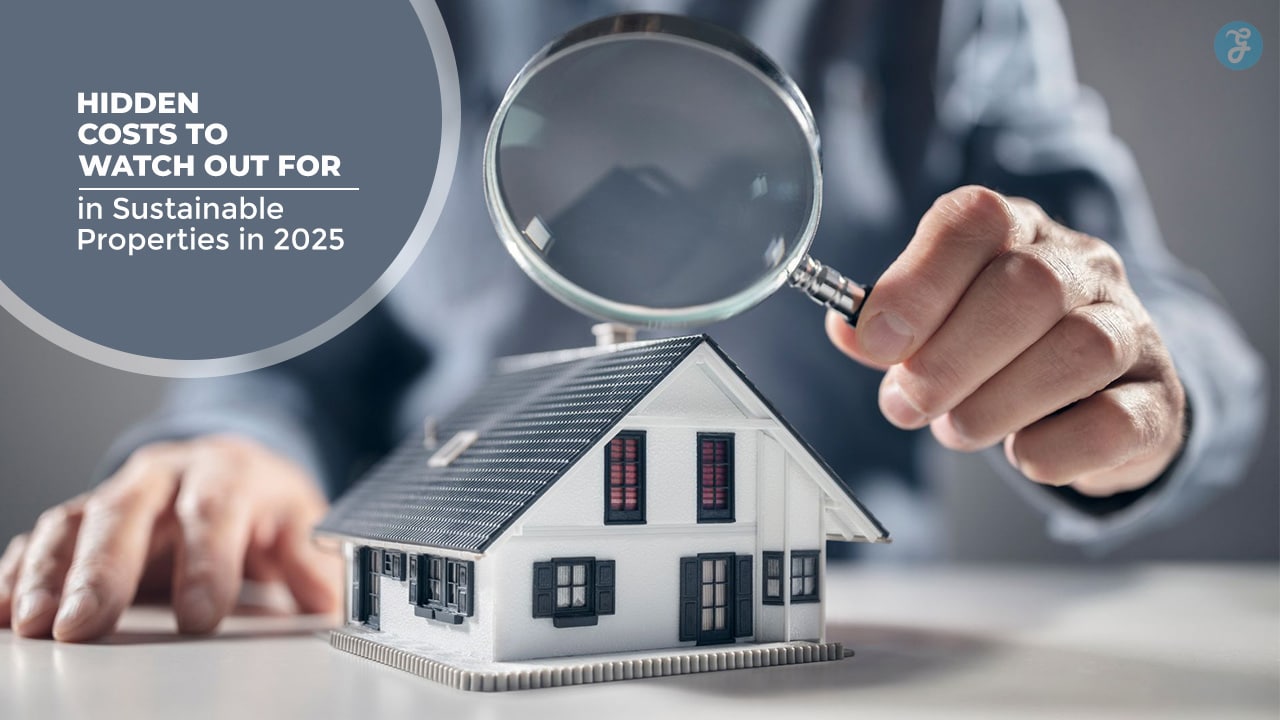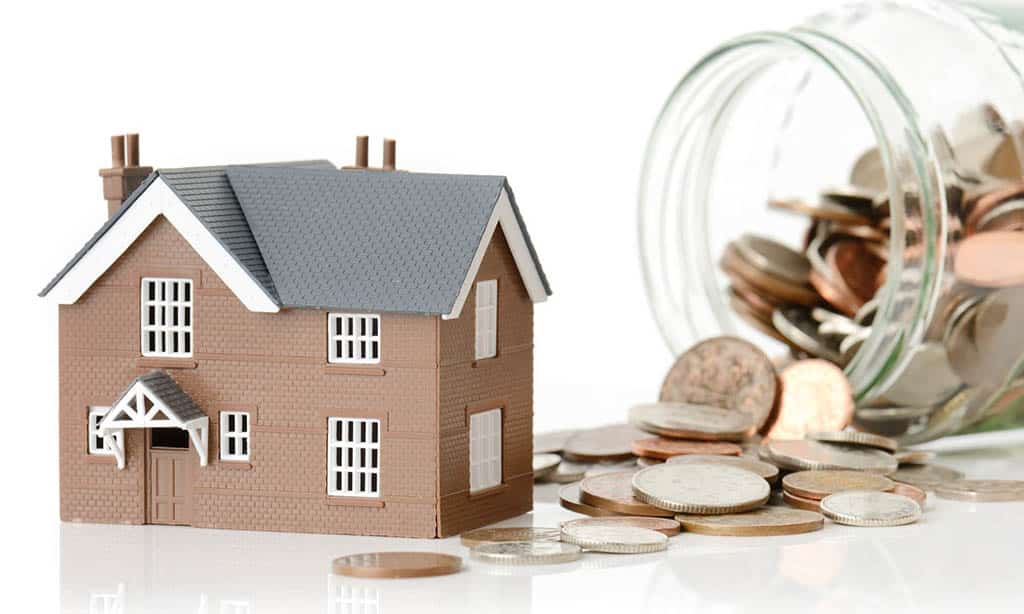Investing in sustainable properties has become a growing trend in 2025, driven by environmental concerns, rising energy costs, and a desire for eco-friendly living.
Sustainable homes are designed to reduce environmental impact, conserve energy, and create healthier living spaces. However, while the benefits are significant, there are often hidden costs in sustainable properties that can surprise even the savviest buyers.
Understanding these hidden costs is crucial for anyone considering investing in eco-friendly homes. From installation expenses for renewable technologies to ongoing maintenance and compliance costs, these factors can impact your overall investment.
This guide will explore the hidden costs in sustainable properties, offering valuable insights to help you make informed decisions and avoid financial surprises.
1. Higher Initial Construction Costs
Building a sustainable property often comes with a higher price tag at the outset compared to traditional homes. This is because eco-friendly materials like bamboo flooring, reclaimed wood, and energy-efficient windows tend to be more expensive than their conventional counterparts.
Additionally, renewable energy systems such as solar panels and geothermal heating involve significant upfront investments. Beyond materials, labor costs may also be higher, as specialized construction techniques often require skilled professionals. While these costs may deter some buyers, they are often offset by long-term savings on energy bills and increased property value.
Sustainable homes also deliver environmental benefits and better living conditions, making them a worthwhile investment for eco-conscious homeowners.
Hidden Costs
- Premium prices for eco-friendly materials.
- Additional labor costs for specialized construction techniques.
- Advanced design fees for architects experienced in sustainable building.
| Cost Element |
Estimated Cost |
| Energy-Efficient Windows | $500–$1,000 per window |
| Solar Panel Installation | $10,000–$25,000 |
| Sustainable Insulation | $1,500–$5,000 for an average home |
While these upfront costs may seem daunting, they often pay off over time through reduced utility bills and increased property value.
2. Maintenance and Repair Costs
Sustainable properties are equipped with advanced technologies like solar panels, rainwater harvesting systems, and smart appliances that reduce environmental impact. However, these innovative systems require regular maintenance to ensure optimal performance, which can lead to hidden costs.
For instance, solar panels may need professional cleaning, while rainwater harvesting systems require periodic inspections and filter replacements. Repairs often necessitate specialized technicians, who charge premium rates.
These costs can quickly add up if not budgeted for in advance. Despite these expenses, regular maintenance ensures that sustainable systems operate efficiently, contributing to long-term savings and environmental sustainability.
Hidden Costs
- Regular maintenance of renewable energy systems.
- Replacement parts for advanced technologies.
- Professional technicians for repairs.
| System | Annual Maintenance Cost |
| Solar Panels | $300–$600 |
| Smart Home Systems | $200–$500 |
| Rainwater Harvesting Units | $150–$300 |
To minimize unexpected repair expenses, homeowners should budget for annual maintenance and establish a relationship with certified service providers.
3. Certification and Compliance Costs
Obtaining certifications such as LEED (Leadership in Energy and Environmental Design) or ENERGY STAR can significantly enhance the market value of a sustainable property. These certifications validate the eco-friendliness of a home and reassure buyers about its sustainability standards.
However, the certification process involves costs that often go unnoticed. Fees for applications, inspections, audits, and compliance adjustments can add up quickly. Additionally, property owners may need to make modifications to meet the stringent requirements of these certifications.
While these certifications add value to the property, it’s important to account for their associated costs during the planning stage to avoid unexpected financial burdens.
Hidden Costs
- Application fees for certifications.
- Inspection and auditing costs.
- Updates to meet certification requirements.
| Certification Type | Cost Range |
| LEED Certification | $2,500–$10,000 |
| ENERGY STAR Compliance | $500–$2,000 |
Although these certifications validate the sustainability of a property, their associated costs can strain budgets if not planned for in advance.
4. Specialized Insurance Costs
Sustainable properties often feature unique systems like solar panels, wind turbines, and green roofs, which can be costly to repair or replace. Standard insurance policies may not fully cover these specialized components, necessitating tailored insurance plans.
Such policies often come with higher premiums and deductibles. Additionally, insuring unconventional materials used in sustainable properties may require additional coverage. Property owners should consult with insurance providers to ensure comprehensive protection for all eco-friendly features.
While these policies provide peace of mind, their higher costs can strain a budget if not considered during the planning phase.
Hidden Costs
- Increased premiums for insuring renewable energy systems.
- Limited coverage for innovative building materials.
- Higher deductibles for specialized repairs.
| Feature | Insurance Premium Increase |
| Solar Panels | $200–$500 annually |
| Green Roofs | $300–$800 annually |
Investing in comprehensive insurance coverage ensures peace of mind but requires careful budgeting.
5. Retrofitting Older Properties
Converting a traditional home into a sustainable property can be a complex and costly process. Retrofitting involves structural changes to accommodate energy-efficient systems, such as upgrading insulation, installing double-glazed windows, and adding renewable energy solutions like solar panels.
These upgrades often require specialized labor and materials, which come at a premium. Additionally, older homes may have infrastructure that is incompatible with modern sustainable technologies, leading to unforeseen expenses.
While retrofitting enhances energy efficiency and reduces utility costs in the long run, it’s essential to conduct a detailed assessment of the property beforehand to estimate the total cost of retrofitting.
Hidden Costs
- Structural changes to accommodate sustainable systems.
- Unexpected expenses from outdated infrastructure.
- Permits and approvals for modifications.
| Retrofit Upgrade | Estimated Cost |
| Energy-Efficient HVAC | $5,000–$10,000 |
| Double-Glazed Windows | $300–$600 per window |
Before purchasing an older property, conducting a detailed audit can help estimate retrofitting costs accurately.
6. Energy Storage Systems
Renewable energy sources like solar power are integral to sustainable living, but they are not always consistent. Energy storage systems, such as lithium-ion batteries, are essential for storing excess energy for later use.
While these systems enhance reliability, they come with high upfront costs and ongoing maintenance expenses. Batteries have a limited lifespan and need replacement after a certain number of charge cycles.
Additionally, ensuring the system operates at peak efficiency may require professional inspections and occasional repairs. Properly budgeting for these expenses is crucial to enjoy uninterrupted energy supply and maximize the benefits of renewable energy systems.
Hidden Costs
- High initial costs for battery systems.
- Limited lifespan requiring periodic replacement.
- Maintenance fees for battery efficiency.
| Energy Storage Type | Cost Range |
| Lithium-Ion Battery System | $7,000–$15,000 |
While energy storage adds convenience, it’s important to budget for ongoing maintenance and eventual replacement.
7. Limited Availability of Skilled Labor
Building and maintaining sustainable properties often require skilled labor trained in eco-friendly construction methods and renewable energy systems. Unfortunately, professionals with expertise in green building practices can be difficult to find, especially in less urban areas.
This scarcity drives up labor costs, as homeowners may need to pay a premium for experienced technicians or bring in specialists from outside the region. Delays caused by limited availability of skilled workers can further inflate costs.
Property owners should plan ahead to secure reliable professionals and ensure their sustainable systems are installed and maintained correctly.
Hidden Costs
- Premium labor charges for skilled professionals.
- Limited availability causing delays in construction or repairs.
- Additional costs for specialized training or workshops.
| Professional Service | Cost per Hour |
| Solar Panel Installation | $50–$100 |
| Green Roof Maintenance | $40–$80 |
Factoring in labor costs ensures smoother project timelines and better quality outcomes.
8. Smart Home Technology Costs
Smart home technology is becoming an integral part of sustainable properties, offering features like energy monitoring, automated lighting, and temperature control. While these systems improve efficiency and convenience, their installation and maintenance can be costly.
Smart devices often require professional setup, software updates, and troubleshooting. Additionally, homeowners may need to invest in cybersecurity measures to protect their smart home systems from hacking.
Although the initial and ongoing costs can be significant, smart home technology can lead to substantial energy savings and a more comfortable living experience over time.
Hidden Costs
- High installation fees for smart systems.
- Software updates and compatibility issues.
- Security risks requiring additional protection.
| Smart Technology Feature | Installation Cost |
| Smart Thermostat | $250–$500 |
| Smart Lighting Systems | $100–$300 per fixture |
Investing in scalable and upgradeable technology can minimize long-term expenses.
9. Water Conservation Systems
Water-saving systems such as rainwater harvesting units and graywater recycling systems are common in sustainable properties. These systems help conserve water, reduce utility bills, and promote eco-friendly living.
However, their installation involves significant upfront costs, and regular maintenance is essential to keep them functioning efficiently. Filters need to be replaced periodically, and storage tanks require cleaning to prevent contamination.
Additionally, permits for water reuse systems may incur extra expenses. Despite these costs, water conservation systems are a valuable investment that supports sustainable living and reduces environmental impact.
Hidden Costs
- Filters and parts replacement.
- Regular maintenance and inspections.
- Permits for water reuse systems.
| Water System | Installation Cost |
| Rainwater Harvesting Unit | $2,000–$5,000 |
| Graywater Recycling System | $1,500–$3,500 |
Proper maintenance and planning ensure these systems remain cost-effective over time.
10. Higher Property Taxes
Sustainable properties are often appraised at higher market values due to their eco-friendly features and advanced systems. While this is beneficial for resale purposes, it can lead to increased property taxes.
Local governments may apply higher tax rates based on the enhanced value of the property, particularly if it includes features like solar panels, green roofs, or high-efficiency HVAC systems.
Property owners should research local tax regulations and account for potential increases in their budgets. Although higher taxes are a financial burden, they reflect the premium value and long-term benefits of sustainable properties.
Hidden Costs
- Increased property tax assessments.
- Higher rates due to premium valuations.
- Annual increases tied to local regulations.
| Property Feature | Tax Increase Percentage |
| Solar Panel Installation | 10%–20% |
| High-Value Sustainable Home | 15%–30% |
Understanding local tax policies helps homeowners prepare for these additional costs.
Takeaways
While sustainable properties are a worthwhile investment for the environment and long-term savings, being aware of the hidden costs in sustainable properties is essential.
From higher initial investments to ongoing maintenance and compliance expenses, these costs can add up quickly. Proper research and budgeting can help homeowners avoid surprises and make informed decisions.
Sustainable living is achievable and rewarding, as long as potential costs are planned for effectively.






































